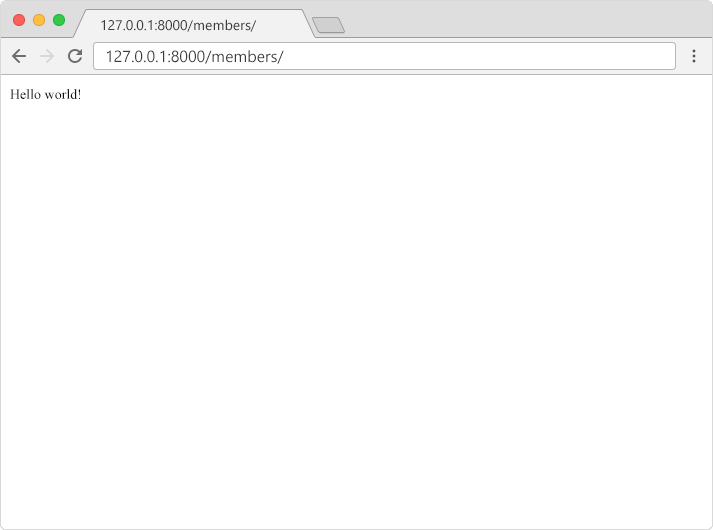Django URLs
URLs
Create a file named urls.py in the same folder as the
views.py file, and type this code in it:
my_tennis_club/members/urls.py:
from django.urls import path
from . import views
urlpatterns = [
path('members/', views.members, name='members'),
]
The urls.py file you just created is
specific for the members application. We have
to do some routing in the root directory my_tennis_club
as well. This may seem complicated, but for now, just follow the instructions
below.
There is a file called
urls.py
on the
my_tennis_club
folder, open that file and add the
include
module in the
import statement, and also add a
path() function in the
urlpatterns[]
list, with arguments that will route users that comes in via
127.0.0.1:8000/.
Then your file will look like this:
my_tennis_club/my_tennis_club/urls.py:
from django.contrib import admin
from django.urls import include, path
urlpatterns = [
path('', include('members.urls')),
path('admin/', admin.site.urls),
]
If the server is not running, navigate to the /my_tennis_club folder and execute this command in the command prompt:
python manage.py runserver
In the browser window, type 127.0.0.1:8000/members/ in the address bar.


